Stock market today: S&P 500 climbs as health care, tech gain; Nvidia earnings loom
Introduction & Market Context
Penske Automotive Group (NYSE:PAG) released its first quarter 2025 financial results on April 30, showcasing solid performance across its diversified business segments. The international transportation services company reported a 14% increase in net income and earnings per share compared to the same period last year, continuing the momentum from its strong fourth quarter 2024 performance.
The company’s stock was trading at $157.59 at the previous close, with premarket activity showing a 0.57% increase to $158.49. Penske’s shares have been trading in a 52-week range of $134.05 to $180.12, indicating relatively stable investor confidence in the company’s business model and growth strategy.
Quarterly Performance Highlights
Penske Automotive reported total revenue of $7.6 billion for Q1 2025, representing a 2% increase from $7.4 billion in Q1 2024. Net income attributable to common stockholders rose 14% to $244 million, compared to $215 million in the same period last year. Earnings per share also increased by 14% to $3.66, up from $3.21 in Q1 2024.
As shown in the following performance summary chart, Penske has maintained steady revenue growth while significantly improving its bottom line:

On an adjusted basis, which excludes a $52.3 million gain on dealership sales and $25.2 million in impairments and other charges, Penske reported income before taxes of $310 million (up 5%) and earnings per share of $3.39 (up 6%) compared to Q1 2024.
The company’s detailed performance metrics show improvement across most key financial indicators:

Segment Performance Analysis
Penske Automotive operates a diversified business model with revenue streams from multiple segments and geographic regions. For Q1 2025, retail automotive contributed 86% of total revenue, followed by retail commercial trucks at 11% and commercial vehicles & distribution at 3%. Geographically, North America accounted for 59% of revenue, with the United Kingdom (TADAWUL:4280) at 10% and other international markets at 31%.
The following chart illustrates this diversification:
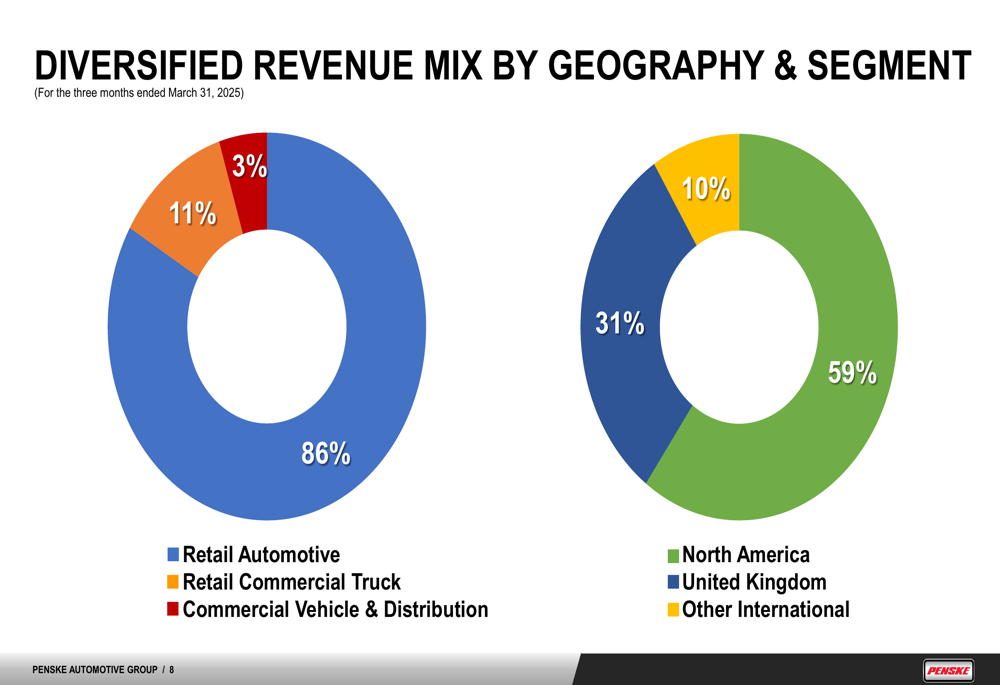
In the retail automotive segment, Penske delivered 116,937 total units in Q1 2025, a 2% decrease from Q1 2024. However, new vehicle sales increased 4% to 49,076 units, while used vehicle sales declined 11% to 57,175 units. Agency units (primarily in Europe) grew significantly by 32% to 10,686 units.
The company’s premium brand focus remains strong, with premium brands accounting for 74% of total worldwide automotive dealership revenue. BMW (ETR:BMWG) leads at 28%, followed by Toyota (NYSE:TM) at 13%, Audi and Porsche each at 10%, and Mercedes-Benz (OTC:MBGAF) at 9%.
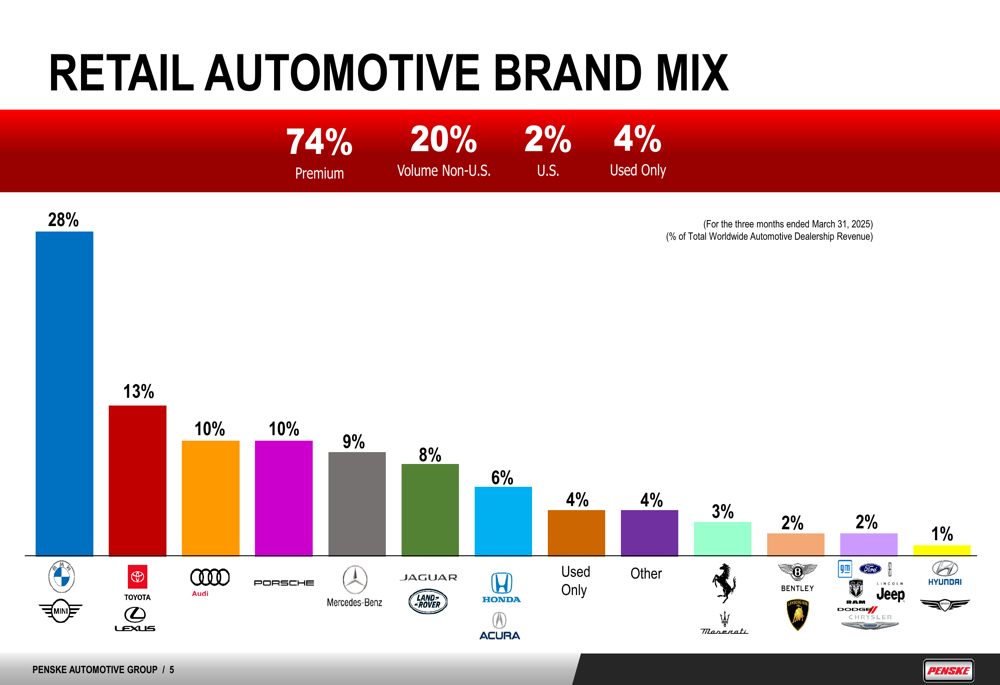
Gross profit per unit showed mixed results across vehicle categories. New vehicle gross profit per unit decreased 5% to $4,991, while used vehicle gross profit per unit increased 10% to $2,133. Finance & insurance gross profit per unit grew 3% to $1,808.
The following chart shows the historical trend of gross profit per unit for both new and used vehicles:
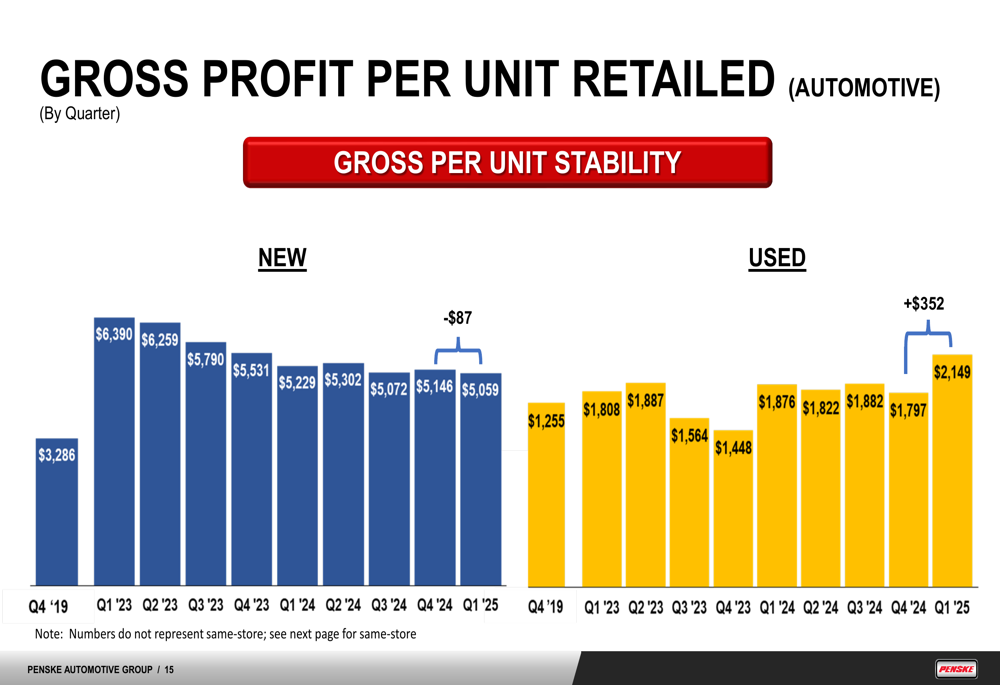
In the retail commercial truck segment, Penske’s Premier Truck Group saw a 4% decrease in total unit sales to 4,373 units. However, used vehicle gross profit per unit surged 137% to $7,541, offsetting an 11% decline in new vehicle gross profit per unit to $8,822.
Capital Allocation & Balance Sheet
Penske Automotive has maintained a consistent capital allocation strategy, focusing on dividends, capital expenditures, share repurchases, and strategic acquisitions. In Q1 2025, the company returned $122 million to shareholders, including $82 million in dividends and $40 million through share repurchases.
From April 1 through April 25, 2025, Penske repurchased an additional 496,000 shares for $71 million, bringing the year-to-date total to 750,000 shares for $111 million. Since 2023, the company has increased its dividend by 54% to $1.22 per share as of February 2025.
The company’s debt position remains manageable, with total debt of $1,772 million as of March 31, 2025, and a leverage ratio of 1.2x. The following chart illustrates Penske’s historical debt and leverage trends:

Strategic Initiatives
Penske’s retail automotive business continues to benefit from its diversified revenue streams. While new and used vehicle sales generate the majority of revenue (46% and 34% respectively), service and parts (12%) and finance & insurance (5%) contribute significantly higher margins. This is evident in the gross profit breakdown, where used vehicles account for 43% of gross profit, followed by new vehicles at 26%, service & parts at 18%, and finance & insurance at 12%.
The following chart illustrates this revenue and gross profit distribution:
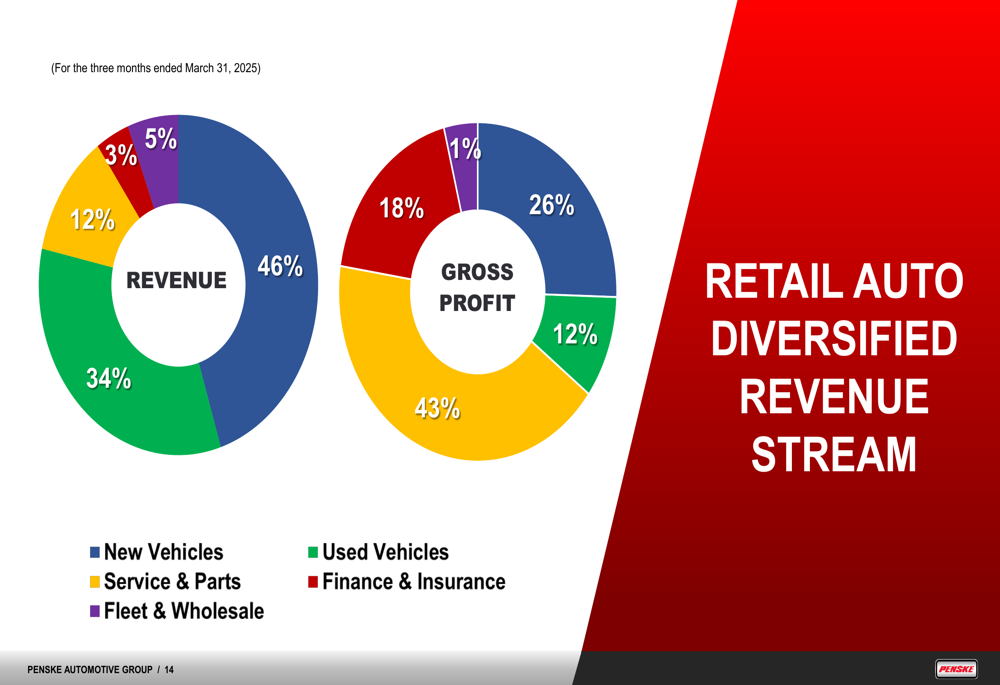
Similarly, in the retail commercial truck segment, while new vehicles generate 64% of revenue, service and parts contribute 66% of the gross profit, highlighting the importance of after-sales services to Penske’s profitability.
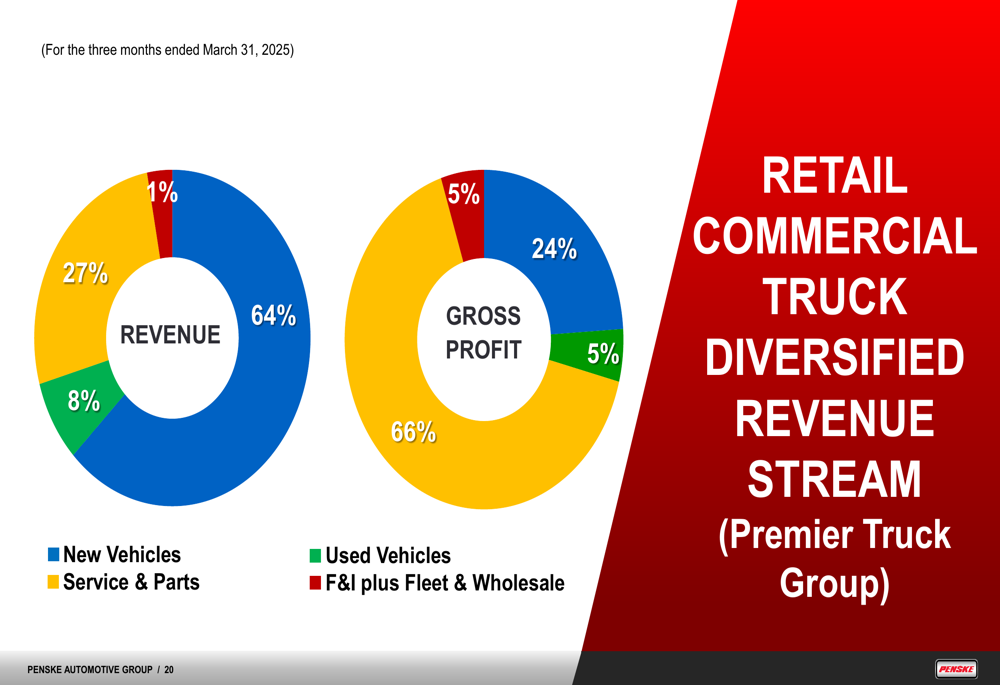
Penske Transportation Solutions (PTS), in which Penske Automotive holds a 28.9% ownership stake, reported a 2% increase in equity income compared to Q1 2024. PTS manages a fleet of over 428,000 trucks, tractors, and trailers, with full-service lease and maintenance accounting for 52% of operating revenue.
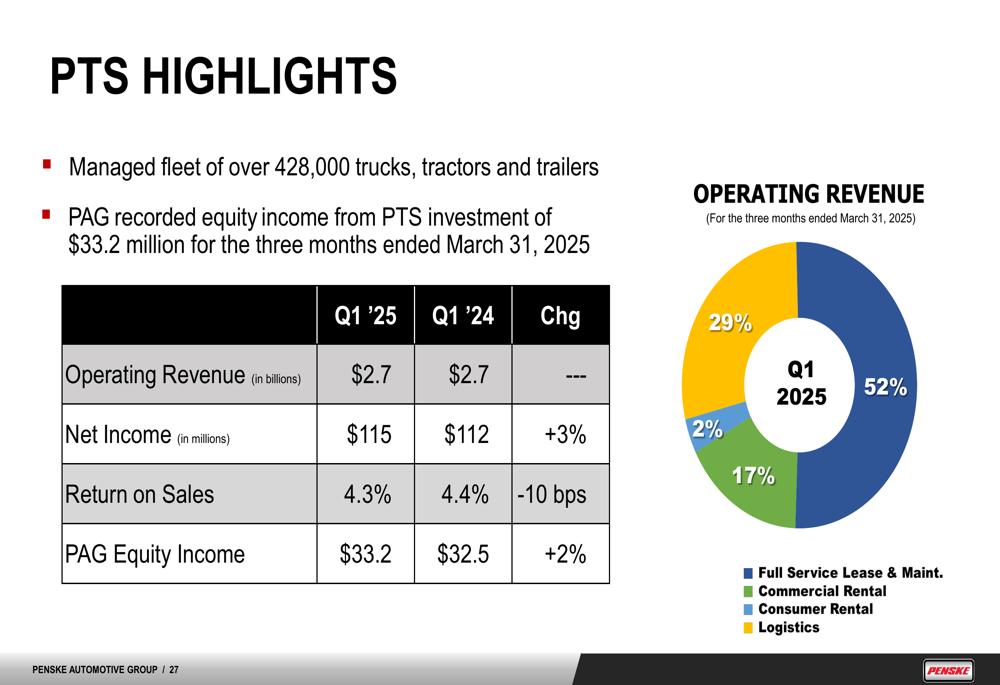
Forward-Looking Statements
Looking ahead, Penske Automotive appears well-positioned to continue its growth trajectory through its diversified business model and strategic capital allocation. The company’s focus on premium automotive brands, commercial trucks, and transportation solutions provides multiple revenue streams and helps mitigate risks associated with any single market segment.
The company’s strong balance sheet, with a debt-to-total capitalization ratio of 24.7% and a leverage ratio of 1.2x, provides flexibility for future investments and acquisitions. With $118 million in cash and $2 billion of availability under its credit agreements and mortgage facilities, Penske has ample liquidity to pursue growth opportunities.
Penske’s continued focus on shareholder returns through dividends and share repurchases also suggests management’s confidence in the company’s future performance and cash flow generation capabilities. The 54% dividend increase since 2023 underscores this commitment to returning capital to shareholders while maintaining financial flexibility for strategic investments.
Full presentation:
This article was generated with the support of AI and reviewed by an editor. For more information see our T&C.
